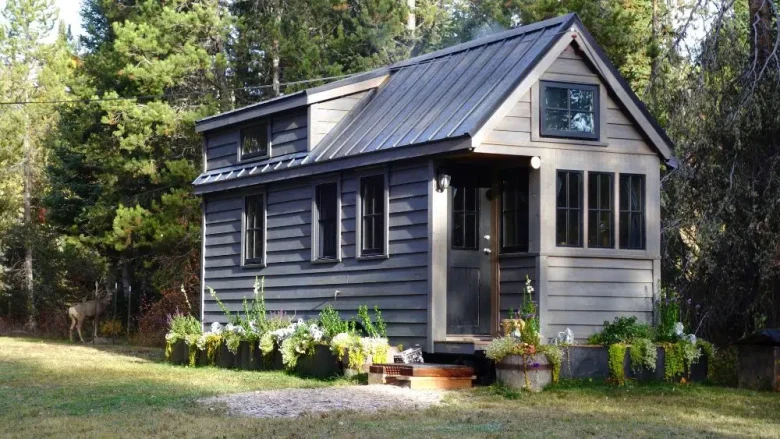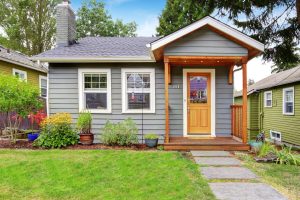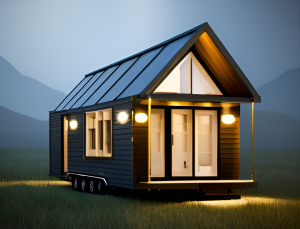In recent years, tiny houses have become very popular as a creative way to solve housing problems and live a simpler life. But before buying a tiny house, it’s important to understand the complex zoning rules that govern where tiny houses are placed and who gets to live in them. Zoning laws vary from place to place, and knowing these rules can help you avoid legal problems in the future.
What are the Laws regarding Zoning?
Zoning laws are local rules governing how land and other property are used in a particular place. Local governments create these rules to ensure that land is used in a manner that is appropriate to the community and meets safety, aesthetic and environmental standards.
Zoning and Tiny House:
Because tiny houses vary so much, zoning rules can be difficult to understand. Tiny houses change the way people think about life. They often blur the lines between RVs, accessory housing units (ADUs), and permanent residences. So it’s important to understand how tiny houses are classified in your area.
Here are some important things to consider when it comes to zoning and tiny houses:
Classification: Depending on its appearance and purpose, a tiny house can be called a recreational vehicle, an ancillary housing unit (ADU), or a primary residence. Each group type has its own set of partition rules.
Minimum Square Meters: Many zoning plans state that homes must be at least a certain size. Most tiny houses are smaller than these minimums, which can be tricky. In some places, ADUs don’t have to be a specific size, making it easier to formally place a tiny house in the backyard of an existing property.
Foundation: Due to zoning regulations, it may be necessary for homes to be built on permanent foundations. Tiny houses on wheels may not meet this standard, which could lead to zoning regulations.
Land Use Zoning: In zoning plans, it is important where your property is located. There are different rules for the types of buildings that can be built in residential, commercial and mixed areas.
Building Code: While zoning laws focus on how the land is used, building regulations ensure that buildings are safe and meet standards for how they are built. Even if your tiny house follows zoning regulations, it must still follow building codes.
Research and Talk to People:
It’s important to do a lot of research and talk to people before committing time and money to a tiny house project. What you can do is:
Rules for Your Region: Research the zoning laws in your area to find out how tiny homes are classified and how they are monitored. Some places may have jumped on the tiny house trend and made rules for it.
Variations and Deviations: In some cases you can request changes or exceptions to the zoning plan rules. This means defending the case with the local authorities and showing that your tiny house idea is in the best interest of the community.
Talk to an Expert: Talk to people who know zoning laws, lawyers, and builders who have worked on tiny home projects before. They can give you useful advice on how to handle your legal needs.
Choose the Right Place:
Once you understand how the zoning regulations in your area affect tiny houses, the next step is choosing the right spot for your tiny house. Here are some things to consider:
Separation Area: Find areas where zoning laws allow tiny houses. Some locations may have areas that allow for co-housing or other types of housing.
Who Owns the Land: If you want to build your tiny house on a piece of land, you need to make sure you own it. If you want to put something in someone else’s yard, discuss the legality with them and get written permission.
Community Rules: A homeowners association (HOA) or community deed may place restrictions on the types of buildings you can build on the land. Check with your HOA to make sure your tiny house plan complies with their rules.
Infrastructure and Services: Think how easy it is to get water, electricity, sewage and waste storage. Depending on where you want to go, you may need to set up these services.
The Effect on the Environment: Consider how your tiny house will affect the space where you plan to place it. Think about things like land erosion, tree felling, and the general sustainability of tiny house projects.
How to Deal with Problems:
Even if you make every effort to follow tiny house zoning rules, you may run into problems. Here’s how to fix some of the most common problems:
Find a Lawyer: If you are having trouble planning, consult a lawyer who specializes in real estate and land use. They can tell you how to talk to local authorities and explore your legal options.
Take a Stand and Learn: Local zoning regulations may not always keep pace with the tiny house movement. Work with your community and local government to push for rule changes or create zoning codes for tiny homes.
Short Term Placement: Finding a stable place for a tiny house can be difficult, but there are places where people can stay indoors for a while. Find out what legal short-term housing options are available in the area.
Conclusion:
Basically, anyone thinking about living in a tiny house needs to understand how complicated zoning can be. These laws govern how the land is used and how buildings are constructed, vary by location, and can have a major impact on whether or not your tiny house project is viable. To successfully resolve this situation, research local laws, talk to experts and, if necessary, get involved with your community to push for supportive laws. By doing this, you can live out your tiny house dreams while getting along with your neighbors and abide by the law. Remember, knowing zoning rules is the key to smooth and happy living in a tiny house.
FAQs:
1. What are zoning plans and why are they important for tiny houses?
Zoning laws are local regulations governing land use and real estate development. They are important for tiny homes because these unique structures often challenge traditional definitions of housing, blurring the lines between recreational vehicles, accessory housing units, and permanent residences.
2. How do zoning laws classify tiny houses?
Zoning laws classify tiny houses based on factors such as size, foundation, and intended use. They can be categorized as recreational vehicles, associated housing units or main residences, each with its own regulations.
3. Can I legally build a tiny house on any lot?
No, not all homes are suitable for tiny houses. Zoning laws, along with property titles, community rules, and infrastructure availability play a vital role in determining where you can legally place your tiny house.
4. Can I build a tiny house on wheels in my backyard?
It depends on the local destination code. Some areas allow tiny houses on wheels as accessory housing units, while others may have dimensions and foundation requirements that must be met.
5. Do tiny houses have to comply with building regulations in addition to zoning regulations?
Yes, tiny homes must also adhere to building codes to ensure they meet safety and construction standards. Zoning laws focus on land use, while building codes ensure structural integrity and safety.



